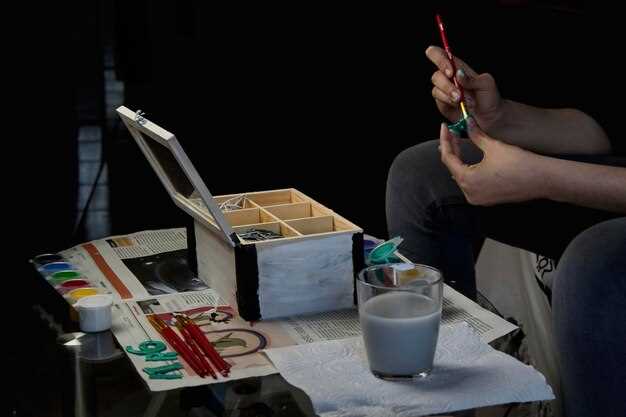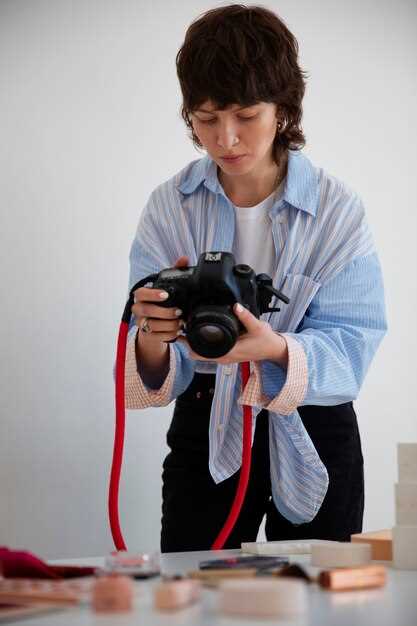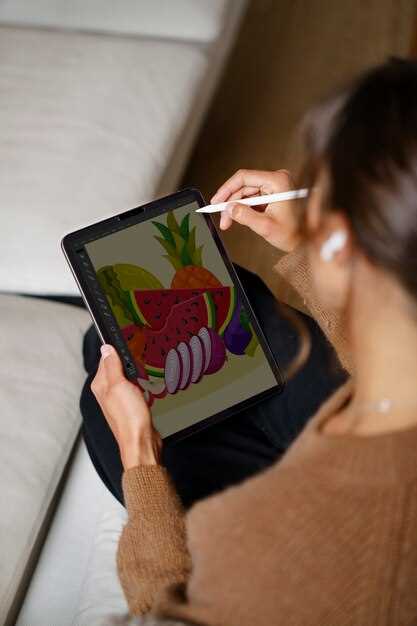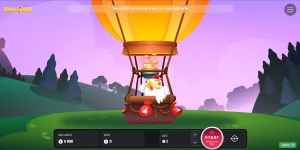Digital painting offers a world of flexibility and limitless possibilities. With layers, undo options, and various blending modes, artists can experiment freely without the fear of making irreversible mistakes. The convenience of a digital palette means you can access a vast array of colors instantly, and adjusting hues or saturation is just a click away. For many, the most attractive feature is the ability to work on multiple projects simultaneously without occupying physical space, ideal for artists in compact living conditions.
On the other hand, traditional painting allows for a tactile experience that digital media simply can’t replicate. The physical act of mixing paints, feeling the texture of the brush on canvas, and the unpredictability of the medium can foster a unique flow of creativity. Additionally, traditional artworks have a tangible quality that many collectors and art enthusiasts find appealing, often leading to a higher perceived value and authenticity of the final piece.
When considering the environmental impact, digital painting is often praised for being paperless and not contributing to chemical waste, which is a significant advantage given current ecological concerns. Nevertheless, traditional painting holds its ground in sustainability when practiced with eco-friendly materials and methods. Each approach to painting has its pros, catering to different needs and preferences while contributing uniquely to an artist’s creative output.
Understanding the Benefits of Digital Painting
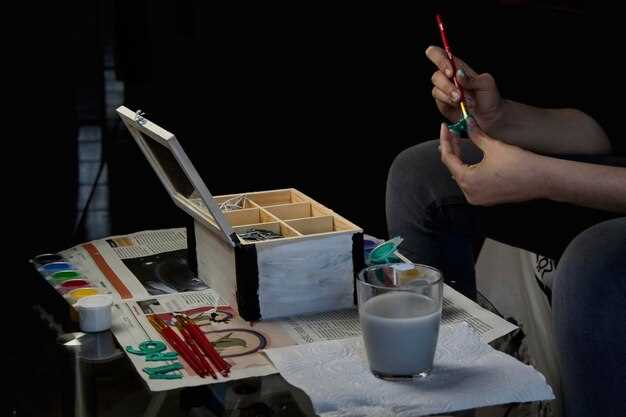
Switch to digital painting for an efficient and flexible workflow. Artists benefit from limitless manipulations. Layers allow easy modifications without harming the original artwork, which is game-changing when making adjustments or experimenting with colors. The practice of undos and redos empowers you to refine your techniques and perfect your vision without hesitation.
Speed is another advantage. Digital painting eliminates the setup and cleanup associated with traditional media. With powerful software tools, artists can create intricate designs swiftly. You can rapidly sample colors or apply textured effects, making the process seamless and enjoyable.
Engage with a wide variety of tools that mimic traditional mediums. Software like Photoshop or Corel Painter belongs in your toolbox. Brushes that replicate oils, watercolors, or pastels give digital artists the freedom to explore styles without the costs of purchasing physical materials.
Commercial artists particularly gain from the ease of sharing and reproducing digital artwork. You can instantly distribute a high-resolution image file for client revisions or prints, maintaining quality across platforms.
| Benefit | Description |
|---|---|
| Flexibility | Work with layers for easy editing and adjustments. |
| Speed | Faster creation with digital tools, no setup/cleanup time. |
| Diversity of Tools | Access a range of brushes and effects simulating traditional media. |
| Efficiency in Sharing | Quickly share files, facilitating collaboration and distribution. |
Whether experimenting with new techniques or producing professional-level artwork, digital painting opens up a realm of possibilities for creativity and productivity. Explore the freedom it offers and redefine how you express your artistic vision.
Tools and Flexibility: Creating Without Limits
Opt for a digital art platform like Procreate or Adobe Photoshop to maximize versatility. These programs offer extensive brush libraries, allowing you to replicate the texture of oil paints or the subtlety of watercolors with just a few clicks. Experimenting becomes instantaneous–adjust brush size, opacity, or color without the wait for layers to dry. Conversely, traditional painting requires you to commit to each stroke, turning your decision-making process into a discipline of precision.
- Color and Texture: Digital tools enable a nearly infinite color palette and texture variety, contrasting with the physical limits of traditional mediums where blending pigments might be constrained by what you have on hand.
- Error Correction: The ‘undo’ function in digital painting minimizes stress over mistakes. In traditional art, correcting an error might involve scraping off paint or starting anew, which can be both time-consuming and costly.
- Portability: Digital tablets and laptops provide the flexibility to create anywhere, whereas traditional art often demands a dedicated studio space with specific lighting, ventilation, and storage for supplies.
- Integration: Digital paintings can be seamlessly integrated into multimedia projects, such as animations or graphic design, enhancing creative possibilities. Traditional paintings lack this direct adaptability but can be digitized for similar purposes.
- Consistency: Replicating specific colors and shades is effortless digitally, as settings can be saved and reused. Traditional painting may require meticulous mixing to achieve consistent colors across sessions.
Re-evaluate your artistic goals to determine the best medium. Digital platforms thrive on speed and adaptability, whereas traditional methods offer tactile, sensory experiences unmatched by digital interfaces. Each medium provides unique opportunities to hone different creative skills, ensuring that your choice aligns with your vision and workflow preferences.
Environmental Impact: Reducing the Carbon Footprint
Embrace digital painting as a sustainable alternative to traditional methods by minimizing the use of physical resources. Digital art eliminates the need for canvases, paints, brushes, and other materials, reducing waste. By working on a tablet or computer, you significantly cut down on the production and disposal of art supplies, which often contain chemicals harmful to the environment.
Electricity consumption is a key consideration. Using energy-efficient devices and turning them off when not in use can mitigate their environmental impact. Opt for devices with Energy Star ratings or similar certifications to conserve power without sacrificing performance.
Cloud storage offers an effective way to manage digital portfolios, eliminating the need for physical storage and reducing paper waste. This approach not only cuts down on clutter but also supports sustainable practices by reducing the demand for paper-based products.
Consider the carbon footprint of traditional shipping and transport required to move art supplies and finished works. Digital artwork transfers seamlessly via email or online galleries, eliminating transportation emissions entirely. Selling digital prints or commissions online allows artists to reach audiences globally without contributing to pollution from physical distribution.
Beyond individual practices, support and advocate for software and platforms committed to sustainable operations. Companies investing in renewable energy sources and energy-efficient data centers can have a substantial impact on global carbon emissions, enhancing the sustainability of digital artistic practices.
Revision and Undo Capabilities: Embracing Creative Freedom
Leverage the power of digital painting by taking full advantage of its revision and undo capabilities. Instantly correct mistakes without any stress, ensuring that every element meets your artistic vision. Experiment freely, knowing you can always step back if an idea doesn’t work. This flexibility allows for exploration of styles and techniques, ultimately enhancing creativity.
Traditional painting often involves a rigorous process to address errors, requiring skill and sometimes additional materials. In contrast, digital platforms enable instantaneous adjustments with tools like layers and history panels. This allows for non-destructive editing, enhancing precision and control in your work.
The digital medium encourages taking risks. Adjust colors, shapes, and compositions with confidence, knowing you can revert changes. Such capabilities transform the process into a dynamic flow, allowing you to iterate and refine continuously.
Harness these features to save time and resources. With the ability to quickly modify your work, you minimize the waiting time associated with drying or setting in traditional mediums. The result is a more efficient workflow and an increased capacity to focus on pushing creative boundaries.
Embrace revision tools as part of your digital painting process to expand your creative horizons. Explore new ideas with the security of knowing every adjustment can be undone, giving you the freedom to innovate without limitations.
Cost-Effectiveness: Budget-Friendly Artistic Expression
Opt for digital painting if you want to save on art supplies. You’ll avoid recurring costs like canvases, paints, and brushes. A one-time investment in a tablet and software can immensely reduce long-term expenses. Whether you’re a beginner or a seasoned artist, digital platforms often come with free trials and updates, enabling you to access the latest tools without additional costs.
Traditional painting, while offering a tactile experience, frequently involves purchasing new supplies. Good quality materials can be expensive, and the costs add up over time, especially for large projects. On the bright side, digital art allows for endless revisions and clean-ups without wasting resources.
Digital art platforms often offer cloud storage, reducing the need for physical space to store artworks. Unlike traditional paintings, which require protective storage solutions and can degrade over time, digital files stay as vibrant as the day they were created.
For those exploring artistry on a budget, consider hybrid solutions. Many digital tools simulate traditional effects, enabling artists to experiment with styles without immediate financial commitment. Start small with a budget-friendly tablet, and grow your digital toolkit as you become more comfortable with the medium.
The Enduring Charm of Traditional Painting
Explore the tactile experience that traditional painting provides, offering a deep and visceral connection to the creative process. Feel the texture of the canvas and the resistance of a brush saturated with vivid pigments, crafting each stroke with intention. This hands-on interaction cannot be replicated, making traditional painting a profound artistic practice.
Immerse yourself in the rich history and techniques, rooted in centuries of artistic evolution. Mastery of mediums such as oil, watercolor, and acrylic opens diverse avenues for personal expression. Each medium offers unique qualities; oil paints boast vibrancy and depth, while watercolors flow with translucency, making every piece distinctive.
Benefit from the unique environment of a studio setting, an intimate space that nurtures creativity, free from digital distractions. This focused atmosphere encourages reflection and patience, often resulting in artwork that conveys genuine emotion.
Create original pieces with tangible value; traditional paintings can be displayed or collected as unique art pieces, cherished for their originality and craftsmanship. Art connoisseurs often favor these unique works, recognizing the skill and dedication required.
Engage with a community of artists and enthusiasts who appreciate the nuances of traditional methods. Participate in workshops and exhibitions, sharing insights and techniques that enrich your creative journey. This network of support enhances not only your skills but also your appreciation for art as a timeless form of expression.
Tactile Experience: Beyond the Canvas
Engage your senses fully by exploring the textures and materials that traditional painting offers. The tactile feedback from a brush or palette knife gliding over canvas, wood, or paper creates a connection to the artwork that digital mediums can’t replicate. To enhance your physical interaction with the medium, consider experimenting with different surfaces like canvas, linen, or watercolor paper, each offering distinct tactile sensations and requiring varied techniques.
For a more immersive experience, focus on the varied consistencies of paints available. Oil paint allows for thicker applications and textures that emphasize brushstrokes, while watercolor provides a smooth, fluid interaction with the paper. Acrylic paint, known for its versatility, bridges the tactile qualities of oil and watercolor, offering quick drying times and the ability to layer.
Incorporating mixed media adds another layer of tactile engagement. Combining textures such as sand, fabric, or metal with traditional media can transform tactile experiences, making your artwork not only visual but also a multi-sensory experience. This approach encourages the viewer to connect on a deeper level by inviting them to explore the surface through touch.
Foster your creativity through tactile variation, and you might find that the process of creation becomes as fulfilling as the final piece. Whether you are seeking a rich, physical engagement with your work or aiming to convey texture and depth visually, traditional painting offers an unparalleled opportunity to go beyond the visual and indulge in the tactile pleasures of art.
Legacy and Authenticity: The Collector’s Perspective
For collectors, traditional paintings often represent a tangible connection to art history and heritage. The unique texture, the specific brushstrokes, and centuries-old techniques contribute to the distinct character of each piece, offering a sense of irreplaceable authenticity. Art collectors treasure these attributes, viewing each painting as a one-of-a-kind masterpiece that enhances their collection’s exclusivity and historical significance.
On the other hand, digital paintings offer unique perks, though they challenge traditional notions of originality. While digital pieces can be reproduced effortlessly, the use of blockchain technology and NFTs is redefining ownership and authenticity in digital art. These innovations allow collectors to verify the originality of digital creations, thus providing a modern solution to ensure the uniqueness and value of digital works.
Collectors should weigh the merits of both mediums based on personal preference and investment strategy. Those who value history and tactile quality might gravitate towards traditional art. Meanwhile, tech-savvy collectors open to innovation might find the growing digital art market appealing. It’s advisable for collectors to stay informed about technological advancements that may impact the market and affect the valuation of both traditional and digital art forms.
Skill Development: The Craftsmanship Journey
Start practicing regularly with both digital and traditional mediums to understand their nuances. Dedicate specific time slots each week to focus on one at a time, enhancing your skills through deliberate practice.
Explore online courses and workshops to expand your knowledge. Websites like Skillshare and Coursera offer a variety of classes in digital painting and traditional techniques. Many courses provide interactive feedback from experienced artists, which is invaluable for improving your skills.
Invest in quality tools and software that cater to your interests. For digital art, consider programs like Adobe Photoshop or Procreate. For traditional, invest in high-quality brushes, paints, and canvases to get the best outcome of your efforts.
Join art communities online and offline to learn from peers and mentors. Platforms like DeviantArt and local art clubs offer opportunities for critique and collaboration, boosting both confidence and capability.
Challenge yourself with diverse projects to improve adaptability. Create scenes that require blending techniques or capturing realism to push your boundaries and accelerate growth.
Document your progress with a sketchbook or digital portfolio. Regularly review your work to recognize improvement areas and celebrate milestones in your artistic journey.
By integrating consistent practice, educational resources, and community engagement, you’ll develop a versatile skill set in both digital and traditional painting, laying a strong foundation for artistic expression.
Market Preferences and Trends: Analyzing Buyer Behaviors
Focus on understanding your buyers’ motivations by examining their purchasing patterns. Art collectors often seek digital paintings for their modern appeal and unique digital effects, which resonate well with the tech-savvy audience. Digital art usually attracts buyers who value innovative techniques, versatility, and the ability to own a piece that can be easily reproduced and shared across multiple platforms.
On the flip side, traditional painting buyers frequently appreciate the tactile experience, texture, and historical authenticity that only physical mediums can provide. These buyers often invest in physical artworks as they perceive them to hold greater long-term value and uniqueness, given their irreplicable nature.
An increasing trend is the hybrid approach, where buyers enjoy both digital and traditional forms. This group values digital paintings’ modern aesthetics alongside the enduring charm of traditional works. Analyze art fairs, online platforms, and social media trends to stay updated on preferences, as these channels offer immense insights into shifting tastes and new opportunities in both sectors.
Video:
Digital Art or Traditional Art
Digital Art or Traditional Art
Q&A:
What are the main cost differences between digital and traditional painting?
Digital painting often requires an initial investment in technology like a computer or tablet and software, which can be costly. However, once you’ve acquired these tools, there are minimal ongoing costs since you don’t need to buy physical materials like canvases, paints, and brushes repeatedly. Traditional painting, on the other hand, involves continuous expenses for these materials, but initially, you might spend less than on digital equipment.
How does the learning curve compare for digital and traditional painting?
Learning digital painting can be challenging initially due to the need to familiarize oneself with software and digital tools. However, digital platforms offer features like undo/redo, layers, and filters that can aid learning and experimentation. Traditional painting might be more intuitive in terms of physical interaction with materials, but mastering techniques without digital aids might demand more time and perseverance.
Can digital painting achieve the same texture and depth as traditional painting?
Digital painting has advanced significantly, and many software programs offer tools that mimic the textures and layers of traditional media very closely. However, some artists and connoisseurs argue that certain tactile qualities and the physical presence of traditional paint on canvas cannot be fully replicated digitally. It often depends on the artist’s skill in utilizing digital tools to achieve comparable results.
In terms of accessibility, which medium has the upper hand?
Digital painting is generally more accessible in terms of sharing and distributing artwork, as files can be sent instantly worldwide through digital platforms. Additionally, digital art is often more accessible for artists to create in limited spaces. Traditional painting requires physical space for storing materials and works, and sharing art physically tends to be more costly and less immediate.
Does the impact on the environment differ between digital and traditional painting?
Digital painting is often seen as more environmentally friendly since it doesn’t require physical materials, which reduces waste and consumption. Additionally, there are no chemical paints or cleanup solvents involved. Traditional painting can have a more significant environmental impact due to the production and disposal of materials like canvas, paper, and paint, which may contain environmentally harmful substances.
What are some advantages of digital painting compared to traditional painting?
Digital painting offers several benefits over traditional painting. Firstly, it provides greater flexibility since artists can easily undo mistakes, experiment with different styles without using physical resources, and make quick adjustments. Additionally, digital art tools often include a wide range of brushes and effects that can be customized for unique textures and finishes. This access to diverse tools can enhance creativity and allows artists to produce work faster. Finally, digital paintings are easily stored, duplicated, and shared online, facilitating collaboration and exposure in a connected world.
